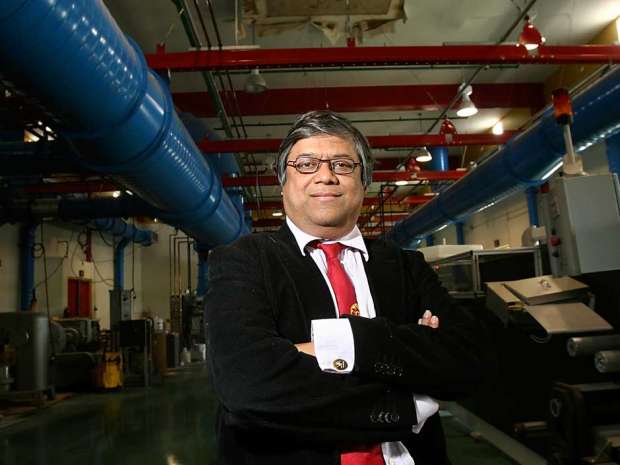Technology 10
The Good, Bad and Ugly of the IoT
The Internet of Things, shortened as IoT, could possibly be the mascot of the appropriately named Industry 4.0. However, according to high-profile technologists such as Don DeLoach, it could be a double-edged sword.
On serious reflection, the first revolution is a slovenly edition of the current revolution. The Industry 4.0 is a blessing and disaster in equal measure.
The Good
For starters, the IoT is a technological development proposed by the Internet of Things Institute (IoTI). It will enhance our daily activities with Internet connection, facilitating data communications.
First, the Internet of Things bodes well for the latter-day global challenges. How? This includes global warming and strained resources? Over the next two decades, it’s predicted that the global population will increase by 2 billion people. To feed the extra mouths, the farm output has the ability to increase thanks to innovation enabled by the IoT. What’s more, farmers will cash in on better agricultural prospects.
Second, IoT oriented technology has the power to improve global security, enhance healthcare services, and boost the global bread baskets. The Internet of Things has brought about advanced security systems. For instance, the gunfire locator; by using sensors such as acoustic and optical and via geographic information system, this can pinpoint the location of a gunfire incident. These security apparatus can be applied in urban centers to help standby security personnel act and react to such gunfire.
Third, improving care services; the technology breakthrough facilitated by the IoT can be handy in overseeing the welfare of old people and enable medical professionals to get in touch with and distantly liaise with the sick.
FYI, the IoT sector is still in its formative stage. However, it will develop like the way the introduction of smartphones in the market has seen an influx of apps.
The Bad and the Ugly
The Internet of Things Institute has a flip side. The first one is cyber insecurity. There are cyber attacks taking advantage of the loopholes in the IoT. For example, unauthorized people with ill-will can ably get access to government communication platforms and spread propaganda.
Second, a hacker can get unauthorized access to a warehouse containing explosive materials and program them to explode simultaneously. DeLoach opines that this can be catastrophic, especially if terrorists take advantage of the complexity of the Internet of Things.
Third is vulnerability; over the past few years, for example, organizations in the Internet of Things sector confident of their hitherto secure innovations have dared hackers to hack into their systems; the easiness with which the hackers did it questions the security of the systems.
Fourth, lack of privacy; the great quantity of data gathered through the Internet of Things innovations can easily lead to privacy intrusion. Fifth, there is the possibility of business rivalry among the companies providing IoT related services. Lastly, social media platforms can take advantage of the IoT to ignite uprisings.
To sum it up, there’s great unexploited potential in the IoT but stakeholders can be doomed and damned.
All Together Now: The 3-Screens Strategy in Marketing
If you find yourself, on occasion, having your smartphone in hand, your laptop computer running before you, while your Television screen works a few feet away, then congratulations – you’re officially a three-screener! It may seem a rather dubious distinction but have no fear, there’s nothing negative to it, especially from a business point of view.
The multi-screen generation
Adults of ages ranging between 18 and 64, who regularly make use of a TV, smartphone, and computer and who also use their computer, smartphone, or gaming console to access the Internet 2-3 times a week are considered to make up the multi-screen generation. It’s reliably estimated that 33 million Americans with access to the Internet fall into this category.
This segment of the population is more often than not better educated and has a higher rate of employment than the rest of the general public falling within the same age range. More to the point, they have the disposable income to acquire these gadgets and the know how to have them all running in sync. They spend 54 hours a week on average doing something or other on media devices.
In marketing terms, this demographic has the label Multi-Screen Consumers, and it should be clear by now why they represent such a high-value target demographic.
The three-screen marketing strategy
Due to the fact that this group is more sophisticated and affluent, your marketing strategies need to mirror this reality and match up to their expectations. The Three-Screen Strategy is tailor-made for their particular quirks.
Constant and seamless customer intimacy is the overriding aim of this method. The kind of thing potential consumers might not know they need – until they have it – will successfully draw them towards your service without putting them off your offers considering them intrusions; product details showing up on your phone with a tap of the advert displayed on the TV; in-car consoles that alert you when you’re driving by an outlet selling collectible CDs of the artist at the top of your most played list, and the like.
Convergent media
The convenience of converging media presents a unique opportunity that may only be taken advantage of by those who figure out ways to make their products and services relevant and accessible across the various available platforms.
It isn’t an easy undertaking by any stretch of the imagination because this tech-savvy group knows all the tricks, and is thus less likely to fall for the traditional click-bait and pop-up traps that have worked over the years. You’ll have to really work for it, but it’s oh so worth it.
Self-Driving Cars: Save the Passenger and Run Over the Pedestrian?
The looming entry of emerging technologies like self-driving cars in the automotive industry will most likely reduce road fatalities but also poses a difficult moral dilemma. If your car has to make a choice, will it hit pedestrians on the road or veer off the road and put your life in danger?
The big challenge
An autonomous driving system requires programmers to develop an algorithm to make crucial decisions and funny enough, these will be based on ethics rather than on technology. According to a study, whose findings were released and published in the journal Science last week, figuring out how to build ethical self-driven cars is one of the biggest challenge in Artificial Intelligence.
Not all crashes can be avoided
With autonomous vehicles, you can expect a reduction in air pollution plus a host of other social benefits. In fact, the study was keen to point out that adoption of these cars will eliminate up to 89% of traffic accidents witnessed today. However, not all can be avoided. For instance, the autonomous vehicle (hereby abbreviated as an AV) may avoid hitting several pedestrians by swerving and hitting a passerby or it may be faced with the tough choice of sacrificing its own passenger in order to save the lives of many.
What’s your take?
When a number of people were asked about what they thought about AVs and the ethical decisions they had to make, they (people) responded in different ways. 3 in every 4 people said it would be more ethical for the car to sacrifice its passenger rather than hit 10 pedestrians. 19% said they would buy a self-driven car if it meant that a loved one might be sacrificed for the ‘greater good’. What’s your take on this? Do you think that regulation of the automotive industry with emphasis on autonomous vehicles will be the solution?
How to Spot Technology Trends
The article explains how to determine the technologies that will be popularly used in the future. Right technology forecast is achieved based on analysis of important technology factors. These factors include qualitative and quantitative data, adoption level, and technology type.
Qualitative and quantitative data
Quantitative information forecasts the level of technology based on statistical analysis. The increase in the sales volume of a technology product or service implies that the demand for the product is increasing. However, an increase in sales may indicate diminishing returns. It is thus necessary to determine the areas of technology improvements that customers prefer. Qualitative information is required to determine the future market conditions carefully. Diminishing return is shown statistically using the S-curve graph. The curve is understood by analyzing three issues. These issues are technology improvement that is not clearly understood, technology that is better understood hence performance easily improves, and technology at the limit where investments generate fewer performance returns.
Adoption level
Technology that is adopted quickly is desirable to investors. However, these technologies have a tendency of expiring or reaching their limits quickly. The quick take off of the technology is mainly because of the huge marketing budget that is financed by venture capitalists. Technologies with fast adoption rates are unsustainable and, therefore, generate minimal long-term returns. The adoption rate is influenced by the level of quantitative and qualitative information. Technology adoption is also influenced by trust. Old technology is preferred because it has been tried. The new technology generates resistance because it involves changes.
Technology type
Closed source technology is favored more than open source technology because it is expertly controlled and promoted. The technology also attracts huge investments for people or organizations that have an interest in its management. Open source technologies are affordable and easily adopted by organizations. However, open technologies are not centrally managed, and this results in fragmentation and incompatibility of information. There is no incentive for investments because of the fragmentation. Hybrid technology is the best option because it combines both closed and open source technologies. Android is a type of hybrid technology because it has intellectual property and allows free usage.
How Amazon Tricks You into Buying
Amazon is one of the most popular and successful online retailers in the world. It has always been the first choice for many looking for particular products. The question thus becomes, how has Amazon been able to maintain being in the top spot despite the emergence of other similar online retailers? The answer is pretty simple. It is all about using strategies that involve various marketing tactics meant to attract a huge number of customers. They are as follows.
Price Comparison
This is a marketing tactic Amazon uses whereby the prices of the most popular products are low and the prices of the less popular products are high. If for instance a flat screen digital television costs $350, Amazon would consistently price them under the competition and the television could cost as low as $250 which is well below other competitive retailers. What the buyer does not realize is the prices for the accessories that come with the television like cables which are less popular go up and a shopper might end up paying more than the initial price of $350.
Free Shipping Offers
If you think free shipping is actually free on Amazon, then you are in for a surprise. Amazon Prime Membership costs $99 annually and it guarantees a two day free shipping and two hour delivery in certain areas. Amazon needs to recover that lost cost and they do so for instance by getting customers to increase the number of items in their shopping carts. Customers are also persuaded to pay extra for the Prime Membership in order to get better “benefits”.
Kindle Promotions
Amazon Kindle customers spend more money in comparison with non-Kindle owners. They also buy expensive items in addition to being frequent shoppers. The amount spend for Kindle owners per year is $1450 compared to $725 from non-Kindle owners.
To conclude, these are the tricks that have made Amazon become a multi-million empire. It is also convenient and reliable hence customers feel more at ease shopping from this website.
Big Data: From the Ground Up
To remain competitive in today’s technology-driven economy, companies have become more and more dependent on data. Whether a company uses data in decision-making is no longer the question. The popular buzzword “Big Data” echoed in both executive and operational corridors. Of course, many questions are raised about this term. To understand what Big Data is, one must strip off all the hype that makes it an enigma in the big digital world.
What is Big Data?
Big Data is a term that simply means an aggregate of all pieces of data that an organization has stored since its inception. There is a common misconception about Big Data – that it’s complex data collected somewhere, probably in a cloud and only savvy data scientists can access and manipulate it.
Big Data includes everyday sales data in a retail store, whether structured or unstructured. It might be on hardcopy invoices or stored in a digital form. Think of all the bookmarked URLs in each employee’s computer and data continually generated by the Internet of Things (IoT), websites, social media platforms, and other sources. That too is part of Big Data that can be used in different types of analysis to influence certain decisions.
Big Data at the bottom levels of an organization
Most employees at the operation level of an organization thing that Big Data is “a thing of the executives”. They don’t realize that they are the ones who create and interact with Big Data on a daily basis. Workers in low management levels ought to realize that every figure or statement they use and store in the company’s database forms part of the company’s Big Data. They, therefore, have a responsibility of ensuring data accuracy at the operational level.
Challenge to executives
Big Data has become the new reality of the corporate world. Management must know that the decisions it makes concerning data affect the reputation and ultimate valuation of the company. Companies are committing large amounts of resources on Big Data analytics. The use, misuse, and governance of data have a direct impact on the goodwill of the company.
Additive Manufacturing Creates Injectable Micro-camera
The world may be on the cusp of a biotech revolution after engineers from the University of Stuttgart designed a camera that is equivalent to the size of a grain of salt with the help of a new technology known as addictive manufacturing. This has the potential to change the landscape of health imaging as well as surveillance.
3D printing comes of age
3D Printing technology, also known as addictive manufacturing has been around for some time but is now starting to offer relevant solutions for practical problems. 3D printing technology can make three dimensional objects by depositing multiple layers of a particular substance according to the required shape and size. Researchers have managed to build a three lens camera using addictive manufacturing technology and fit it at the end of an optical fiber having a width of just two human hair strands. Such devices can be used extensive for exploring parts of the human body and organs which were earlier perceived as impossible.
Injectable camera can help monitor the brain
The device features a compound lens measuring 120 micro meters along with the casing and can be injected into the body using a syringe. The camera can easily focus on images from a distance of 3 mm and transmit the details over a 1.7 meter optical fiber cable attached to it. The lens can also be fitted to image sensors like the ones used in digital cameras.
Immense scope in medical and industrial applications
The minute size makes it ideal for non-destructive and non-invasive applications in both industry and healthcare. Manufacturing constraints have restricted the production of such tiny devices but all that could now change with the help of 3D printing technology. Researchers have revealed that it took only a few hours to design, manufacture and test the device and the results exceeded expectations. The lenses had tremendous compactness and delivered high performance. The lenses can also be deployed in clandestine surveillance by using them with security monitors and robots.
Tiny Canadian Battery Company Could Play David to Goliath Tesla
Tesla Motors Inc., Panasonic Corp. and Samsung Electronics Co. are the giants who are battling it out in the race of mass producing large-scale rechargeable batteries. However, a tiny company may have hit the jackpot: Electrovaya Inc.
This Canadian company primarily manufactures lithium-ion batteries. It is owned and operated by an adjunct professor of electrochemistry at the University of Toronto. While the company’s portfolio might not seem impressive at first glance, investors are lining up at the door with Bloomberg New Energy Finance claiming its valuation at $250 billion by 2040.
Electrovaya’s shares have risen to five times their market value of C$297 million ($228.78 million) over the past 12 months. On the other hand, Tesla’s Powerwall failed to perform and they came down by 20%.
The company has risen at lightning speed, signing several deals worth millions of dollars. Electrovaya’s technology has 400 patents to its name and that is what gives the company its edge claims CEO Sankar Das Gupta. Not only is its flexible ceramic separator highly heat resistant, the company’s production processes are solvent-free which makes them greener for the environment and gives batteries double the life of a conventional one.
Indeed, the CEO claims to want to be the next General Electric. The small firm is taking on goliaths like Panasonic and Tesla, who are involved in joint product development. These two companies are involved in creating a $5 billion lithium-ion gigafactory in Nevada.
To finance their venture, the Canadian company has found some innovative solutions. It bought out Daimler AG’s lithium-ion battery manufacturing plant which was the largest in Europe. However, after the automaker decided to relinquish the business Electrovaya bought it at a fraction of its actual value.
This deal was also of utmost important due to the fact that it consisted of the factory’s proprietary ceramic separator technology. As the bane of a lithium-ion batteries is fire, the company seems to have made a strategic decision at the right time.
CEO Das Gupta claimed that the combination of German and Electrovaya technology will put them way ahead of Panasonic and Samsung. Today, the only competitor he sees is Polypore International Inc.’s lithium-ion separator. This company was acquired by Japan’s Asahi Kasei Corp. for $3.2 billion last year.
Beign a small company, Das Gupta says that the only problems he encounters is working capital. He hopes that the backing of Export Development Canada will help with the guarantee for lenders. While the company is the best bet in the energy equipment today, there’s no saying where the energy-storage marketplace tomorrow.







